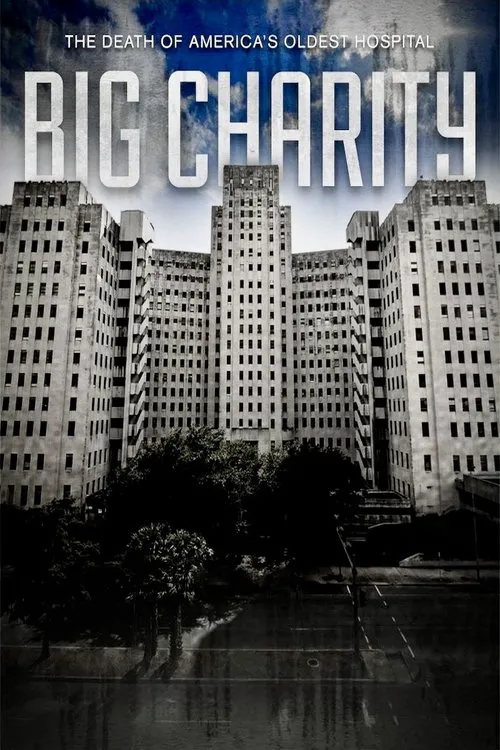Big Charity: The Death of America's Oldest Hospital

Plot
Charity Hospital, the oldest public hospital in the United States, had a long and storied history. Constructed in the mid-19th century, the hospital stood as a beacon of hope and healing for generations of New Orleanians, providing medical care to the city's most vulnerable populations. From its humble beginnings in a small Creole cottage on Rampart Street to its massive 1920s-era renovation, Charity Hospital had served as a safety net for the city's poor and disenfranchised. The documentary film "Big Charity: The Death of America's Oldest Hospital" delves deep into the fascinating and complex history of Charity Hospital, from its establishment as a public hospital in 1736 to its eventual closure in 2013. Through exclusive interviews with healthcare providers, hospital employees, and key players involved in the hospital's closure, the film paints a vivid picture of the challenges faced by Charity Hospital in its final years. The film begins by highlighting the hospital's early days, when it served as a small, privately-funded hospital catering to the needs of French colonists. Over time, the hospital grew and evolved, serving the needs of an expanding city and becoming a hub for medical education and research. The hospital's unique commitment to providing care to the city's most vulnerable populations, including those struggling with poverty, addiction, and mental illness, set it apart from other hospitals in the region. As the hospital approached its 275th anniversary, concerns began to arise about its viability and the best course of action for its future. Hurricane Katrina, which ravaged the city in 2005, proved to be the final blow. The hospital played a crucial role in the city's response to the disaster, providing medical care to thousands of victims and emergency responders. However, many of the hospital's staff members, including doctors, nurses, and support staff, put themselves at risk to save lives, working in treacherous conditions and facing immense personal danger. The aftermath of Katrina presented a crossroads for Charity Hospital. With billions of dollars worth of damage and a dwindling patient base, hospital administrators and city officials began to discuss the possibility of closing the hospital. Many saw this as an opportunity to consolidate resources and build a new, more efficient hospital that could better serve the city's needs. However, those who worked and cared for patients at Charity Hospital felt a deep sense of loss and attachment to the institution. Many of them had dedicated decades of their lives to the hospital, and the thought of losing the place they called "home" was deeply unsettling. Dr. Peter DeBlanc, a surgeon who worked at Charity Hospital for over 20 years, recalled the sense of camaraderie and shared purpose that defined the hospital's atmosphere: "We were a family here. We worked together, laughed together, cried together. It was a place where we came to help people, to make a difference in our community." The documentary presents an array of perspectives on the hospital's closure, from the viewpoints of healthcare providers and hospital employees to those of city officials and developers who played key roles in the decision to close the hospital. Some, such as City Health Director Alex Billioux, saw the closure as a necessary step towards rebuilding and revitalizing the city's healthcare system. Others, like former Mayor Mitch Landrieu, argued that the hospital's closure was a symbol of the city's resilience and determination to move forward. However, the voices of those who worked and cared for patients at Charity Hospital are a powerful counterpoint to these perspectives. They paint a picture of a hospital that was not just a place of healing, but a vibrant community of caregivers, patients, and families who were deeply connected and invested in one another. For them, the hospital's closure was not simply a matter of policy or economics; it was a personal tragedy that involved the loss of a home, a sense of purpose, and a way of life. The film concludes with a poignant look at the post-Katrina efforts to rebuild and revitalize the city's healthcare system. While a new hospital, University Medical Center New Orleans, was constructed to replace Charity, many in the community argue that it lacks the unique spirit and humanity of its predecessor. As hospital employees and patients look back on the hospital's remarkable history, they reflect on what has been lost and what still needs to be done to preserve the memory and legacy of America's oldest hospital. In "Big Charity: The Death of America's Oldest Hospital," the complex and multifaceted story of Charity Hospital's closure is expertly woven together from the perspectives of those who lived it. Through its powerful and moving portrait of the hospital and its people, the film sheds new light on the profound sacrifices made for the sake of progress, illuminating the human side of a story that is often reduced to politics and policy.
Ulasan
Rekomendasi



